After a midweek Clasico, Real Madrid may have hoped for a comfortable fixture to rest their legs. Instead, they faced a Madrid derby against Atletico Madrid, hoping for their first ever victory at the Estadio Wanda Metropolitano. They achieved it with a rampant 3-1 win.
Real got off to a bright start as Casemiro made the most of sloppy marking at a corner which allowed him the space to score an acrobatic overhead kick. Antoine Griezmann soon levelled the tie with a composed finish under the legs of Thibaut Courtois on the counter, though Sergio Ramos would put his side back in front from the penalty spot just before half-time.
Alvaro Morata went on to have a goal ruled out in the second half, but it was Gareth Bale who put the game to bed with a pinpoint finish in space at the far post to make it 3-1. Our tactical analysis will use statistics to identify what key points Real Madrid’s Santiago Solari and Atletico Madrid’s Diego Simeone can take from the game.
No signs of fatigue
Much was made in the build-up about how Real Madrid had returned home at 3am on Thursday morning after a Clasico, whilst Atletico had enjoyed a full week to prepare for the tie. In the early stages it was clear too, with Atleti’s energy being used to press high and dive into some early challenges, with Saul and Thomas Lemar leading the press. After that bombardment in the first 10 to 15 minutes, it was Real Madrid who ruled supreme, winning 48% of their challenges.
In defence, the statistics are particularly impressive. Raphael Varane won all of his challenges, whilst Dani Carvajal won 68% and Ramos also won over half at 55%. The white backline was like a brick wall which Atletico could not break down. Instead, Simeone’s men opted for speculative efforts from distance and set pieces which could not have the same impact as more substantial chances. It is no coincidence that almost half of Atletico’s xG of 1.11 came in the first 30 minutes.
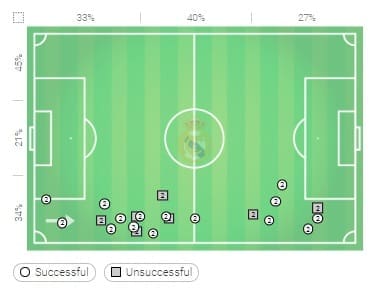
In the latter stages, Madrid grew into the game, dominating play and boasting as much as 75% possession in the final 15 minutes of play. As Atletico looked tired and worn out, perhaps not aided by their bolt-like start out of the blocks, Real Madrid showed superior game management and could still threaten on the counter with Bale introduced to maintain the option of pace down the flanks.
Breaking the lines was key
As those figures show, Real Madrid were comfortable at the back throughout. In fact, the only times that their defence was truly breached came when Atletico broke forwards on the counter and disrupted the back line. In the first half, it was Griezmann who timed his run perfectly, and in the second, Morata was caught offside by millimetres with a similar move which ended with him lobbing Courtois.
It was notable that when Atletico gained possession, Real Madrid would drop deep, looking to block such runs. Toni Kroos and Luka Modric played in a far more conservative role than usual when not on the ball, acting as a second bank of three and even allowing Casemiro to drop in almost as a third central defender at times. Lucas Vazquez’s tracking back allowed that to happen without Real Madrid being outnumbered in the middle of the park, where Thomas Partey was reluctant to get too far forward even with the best of chances.
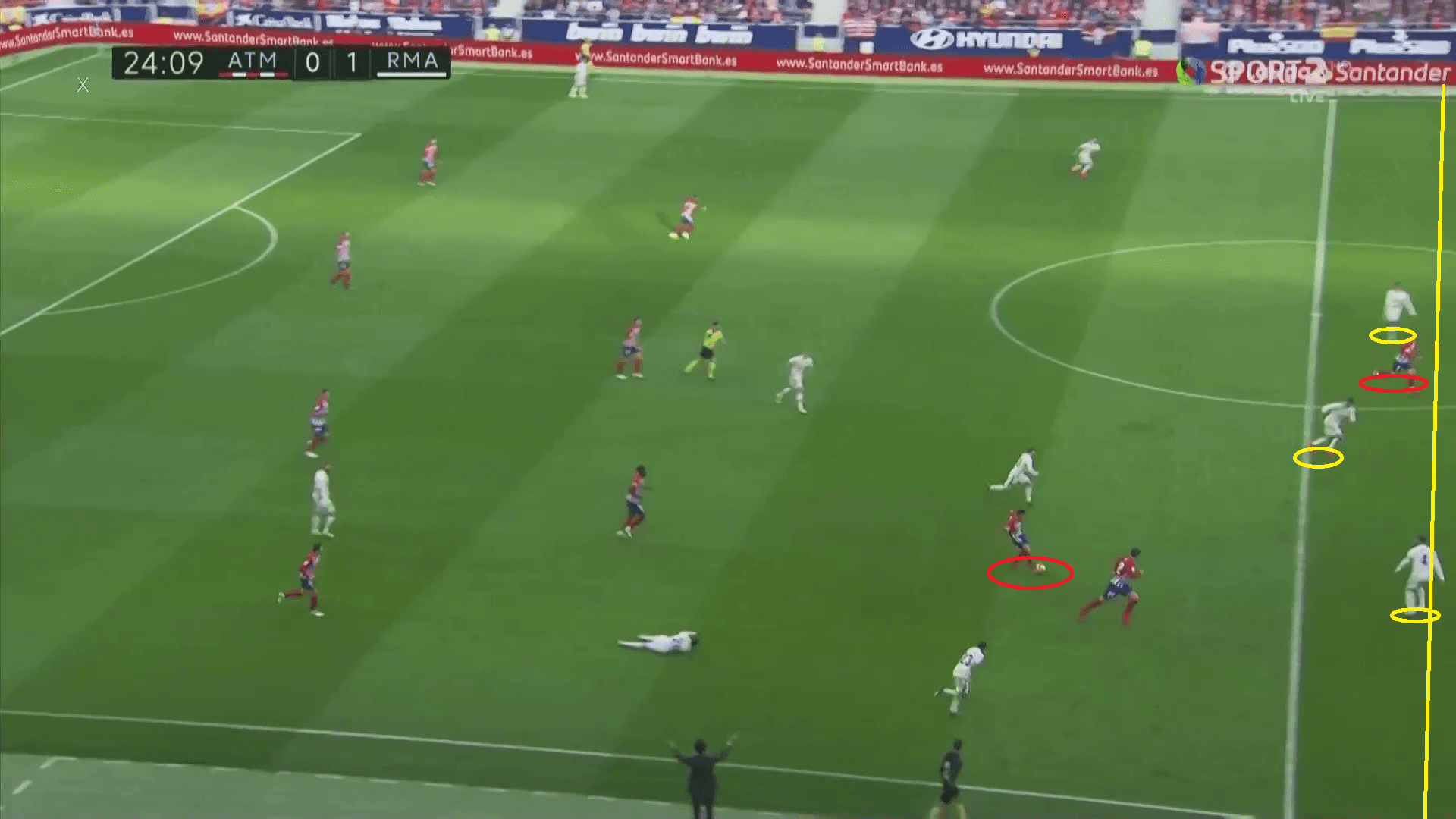
Despite that, they remained vulnerable on the break. Even at 1-0 up as was the case for the equaliser, both full-backs continued to gamble going forwards and often left Casemiro, Varane and Ramos to halt any counter attacks. Without Rodrigo, Atletico failed to mount as many interceptions and breakaways as usual, but when they did they always looked to the centre to find a breakthrough between the two central defenders. Fortunately for Solari and his team, it only worked once.
Real Madrid won the aerial battle
Not since facing third tier Melilla in October has a team won fewer than Atletico Madrid’s 28% of aerial challenges. Usually a speciality of Simeone’s squad, it could not have been further from the truth on Saturday. It was the lowest figure of the season for Atletico and significantly debilitated their game plan, already adapted for to the introduction of Morata in attack. In the meantime, Real Madrid were only too happy to dominate every time that Atleti looked to play a long or high ball.
With Diego Godin winning just one aerial challenge, his lowest figure since March 2018, and Thomas failing to win any from five challenges before he was dismissed, it was a dismal afternoon for some of Simeone’s most reliable men. That was thanks in part to Karim Benzema’s battling up front and Real Madrid’s organisation at set pieces, but also down to the way that Real Madrid looked to play the game on their terms.
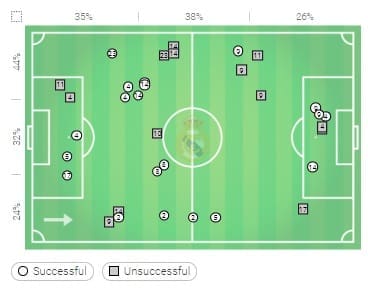
Rather than being panicked by the early rush and high press from Atletico, they remained calm in possession and kept the ball. As Atleti wore out, it granted them more freedom to switch play and exploit their pace down the flanks. It was a well-executed game plan from Solari, one which Simeone had no counter for as his team faded with every passing minute. Failing to achieve even the basics, Atletico could put up little fight as the tie wore on.
There’s still hope for Morata
Ever since leaving Madrid for Chelsea in 2017, it has been nothing but decline for Alvaro Morata. Few were convinced when Atletico decided to bring back a player who was once a ball boy at the Estadio Vicente Calderon and a player in their youth system. After a questionable debut away against Real Betis, there were some dissenting voices as he took to the field to start against his former club. Yet, whilst it was not the dream he might have had, it was a promising home debut for the Chelsea loanee.
Winning more challenges than in any game since November when playing for Chelsea against Crystal Palace, and his second highest since he last played at the Wanda Metropolitano for Chelsea against Atletico in 2017, he was combative throughout. Whilst he is no Diego Costa, he did get stuck in with Ramos and Varane, but also showed signs of the kind of movement that can cause problems for rival defenders.
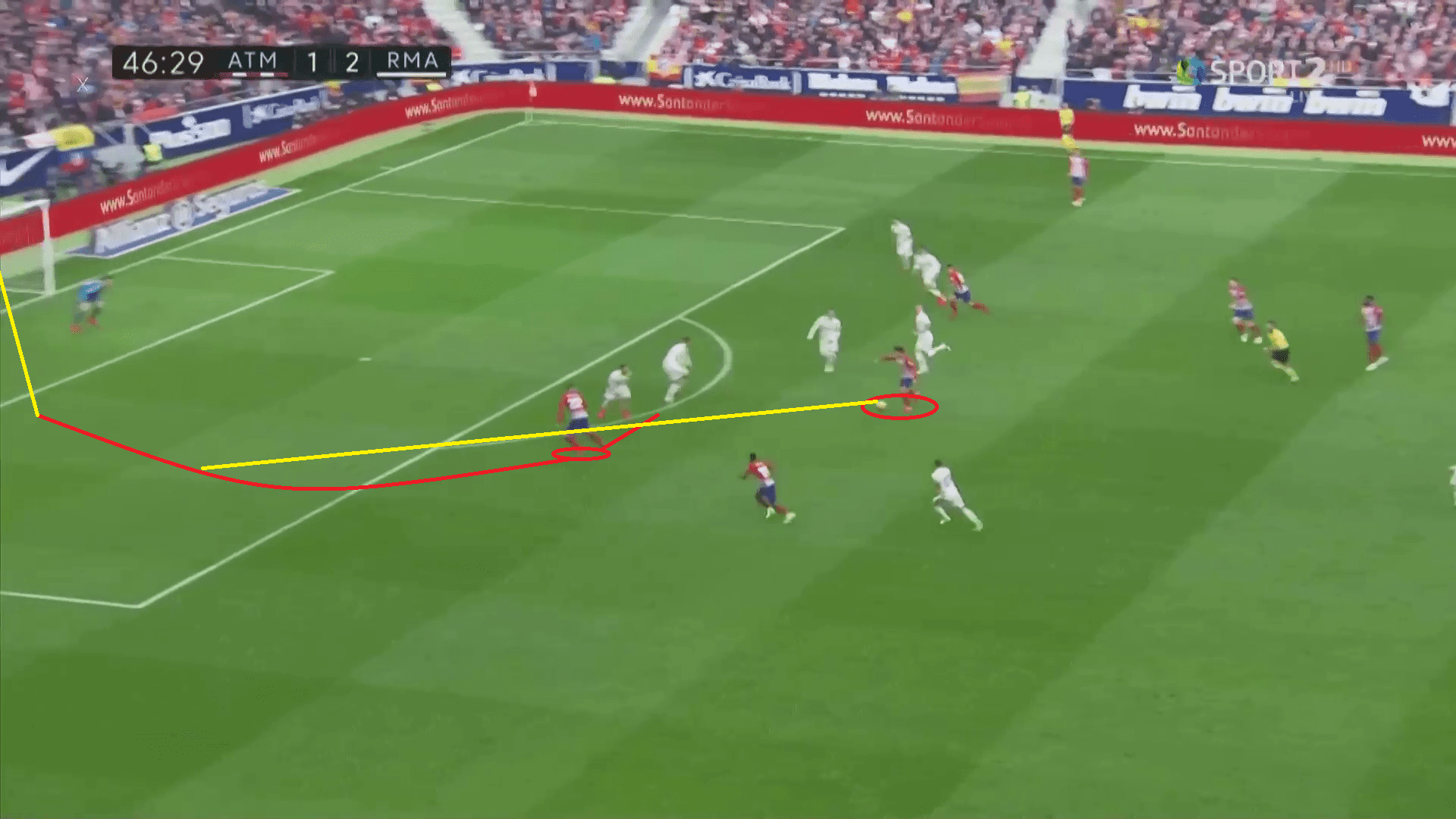
Whilst his first half display was primarily built around the combative and physical side of the game, he enjoyed more freedom in the second half. Pulling away from Sergio Ramos and Dani Carvajal, he had one superb chance very early on after the break. His effort may have been lacklustre, but judging by his finish which would have been a memorable goal with a lob over Courtois when ruled offside, he will only become more clinical as he gains in confidence over the weeks to come.
Conclusion
This was a must-win tie for both sides, but Atletico made life far too easy for Real Madrid. Brimming with confidence, Los Blancos didn’t need asking twice to take every opportunity they were given by the hosts. Simeone will have been frustrated by his team’s lack of quality in the middle of the park, but when Real Madrid gained momentum they looked to be back to their very best. Unfortunately for Simeone, his side were some way off theirs.
If you love tactical analysis, then you’ll love the digital magazines from totalfootballanalysis.com – a guaranteed 100+ pages of pure tactical analysis covering topics from the Premier League, Serie A, La Liga, Bundesliga and many, many more. Pre-order your copy of the February issue for just ₤4.99 here, or even better sign up for a ₤50 annual membership (12 monthly issues plus the annual review) right here.

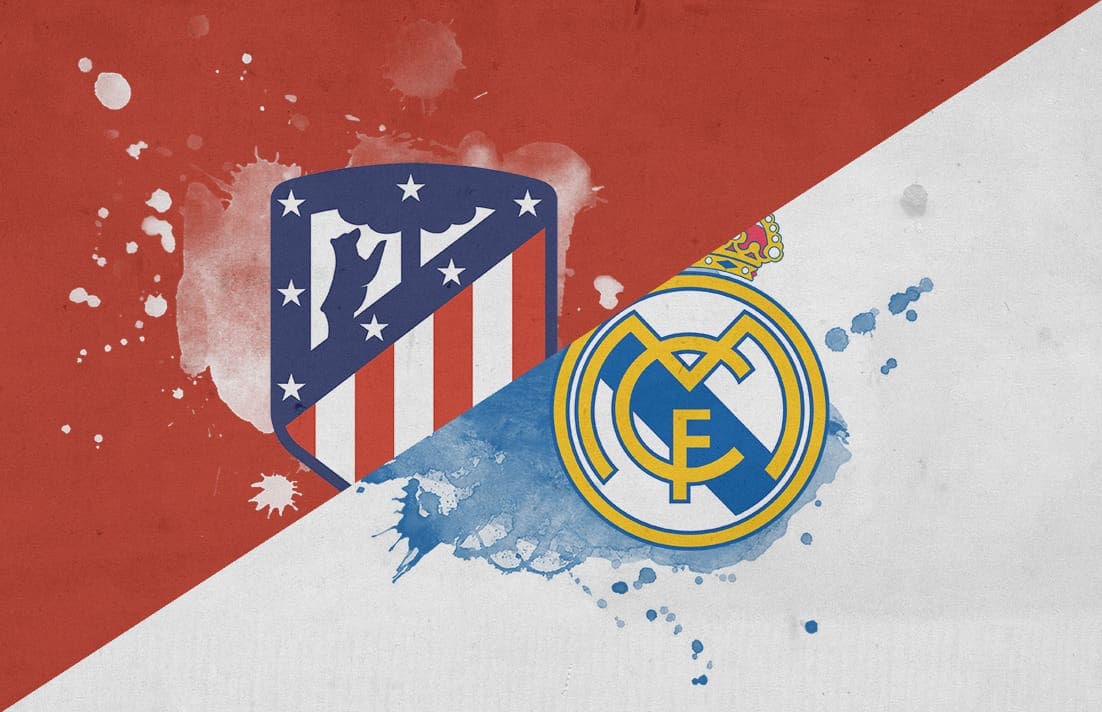



Comments